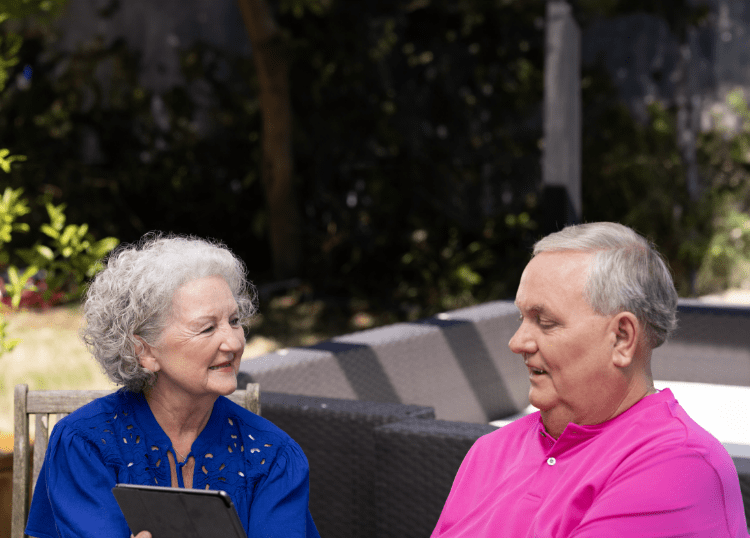Diagnosing gMG
Mike, a patient living with gMG. Mike has received compensation from Alexion Pharmaceuticals, Inc., and has a relative who works for Alexion.
Methods for identifying gMG
Testing helps identify gMG and its subtype1-3
gMG diagnosis begins with a review of the patient’s medical history and physical examination, but clinicians must be careful as signs and symptoms of gMG can look similar to other conditions. Once gMG is suspected, several tests are used to confirm the diagnosis.
85% of gMG diagnoses are anti-AChR+4,a
The other ~15% of individuals are seronegative or have autoantibodies to MuSK or LRP45-8
If gMG is suspected, testing for anti-acetylcholine receptor (AChR) antibodies is a key step toward confirming diagnosis1-3
- Blood tests are used to detect the presence of anti-AChR and other antibodies. However, the absence of anti-AChR does not exclude gMG
- Additional tests can include ice pack tests, especially if ptosis is a key symptom (ice packs are placed over the eye for 2 to 5 minutes to assess ptosis improvement). There may be a benefit in testing the recovery of muscle strength after rest and the ability to look upward for a sustained period
- Diagnostic testing is preferred to help confirm diagnosis, as unofficial measures/additional testing options may not yield the most accurate results
- All patients with confirmed gMG should undergo diagnostic imaging to exclude the presence of a thymoma, as thymomas have been reported in up to 30% of patients with MG
gMG symptoms in patients are commonly measured by the MG-ADL and QMG scales9,10
The Myasthenia Gravis Activities of Daily Living scale (MG-ADL scale) is a categorical scale that assesses the impact on daily function of 8 signs or symptoms that are typically affected in gMG. Each item is assessed on a 4-point scale where a score of 0 represents normal function and a score of 3 represents loss of ability to perform that function. The total score ranges from 0 to 24, with the higher scores indicating more impairment.9
The Quantitative Myasthenia Gravis scale (QMG scale) is a 13-item categorical scale assessing muscle weakness. Each item is assessed on a 4-point scale where a score of 0 represents no weakness and a score of 3 represents severe weakness. The total score ranges from 0 to 39, where higher scores indicate more severe impairment.10
Alexion has compiled a variety of assessment tools that are available for download below.
Download the Assessment Tool BookletReview a common classification method utilized to group MG patients based on symptom severity11
Per the MGFA Clinical Classification, symptoms are divided into different classes based on severity:
Class I: Any ocular muscle weakness; may have weakness of eye closure. All other muscle strength is normal.
Class II: Mild weakness affecting muscles other than ocular muscles; may also have ocular muscle weakness of any severity.
IIa. Prominently affecting limb, axial muscles, or both. May also have lesser involvement of oropharyngeal muscles.
IIb. Primarily affecting oropharyngeal, respiratory muscles, or both; and potentially lesser or equal involvement of limb, axial muscles, or both.
Class III: Moderate weakness affecting muscles other than ocular muscles; may also have ocular muscle weakness of any severity.
IIIa. Mainly affecting limb, axial muscles, or both; with potentially less impact on oropharyngeal muscles.
IIIb. Mainly affecting oropharyngeal, respiratory muscles, or both; with lesser or equal involvement of limb, axial muscles, or both.
Class IV: Severe weakness affecting muscles other than ocular muscles; may also have ocular muscle weakness of any severity.
IVa. Primarily affecting limb, axial muscles, or both; with lesser impact on oropharyngeal muscles.
IVb. Predominantly affecting oropharyngeal, respiratory muscles, or both; with potentially lesser or equal impact on limb, axial muscles, or both.
Class V: Defined as intubation, with or without mechanical ventilation, except when employed during routine postoperative management. Using a feeding tube without intubation classifies a patient as IVb.
LRP4, low-density lipoprotein receptor-related protein 4; MG, myasthenia gravis; MGFA, Myasthenia Gravis Foundation of America; MuSK, muscle-specific tyrosine kinase.
Based on a longitudinal observational study analyzing the heterogeneity and temporal dynamics of AChR autoantibody pathogenicity in serum samples (N=210) from 50 AChR+ MG patients4
